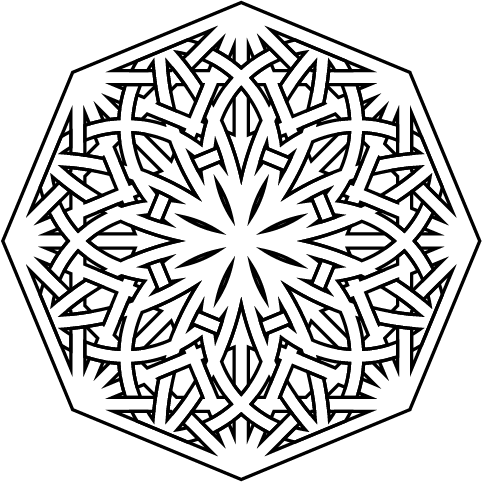Parametric and Algorithmic Art
Share
Parametric Art: Where Mathematics Meets Subtractive Manufacturing
An exploration of algorithmic design, the complex plane, and precision laser fabrication.

In 2018, transitioning from the architectural rigorousness of the UC DAAP program, I began applying the principles of Parametricism—a style derived from algorithms and computer-aided design—to fine art. Pardesco serves as a laboratory where the digital precision of the Riemann Sphere meets the organic warmth of maple wood.
Defining Parametric Art
Parametric design differs fundamentally from traditional drafting. In traditional art, the creator manipulates the geometry directly. In parametric art, the creator manipulates the rules that generate the geometry. By defining relationships between parameters (variables), we generate forms that possess a level of complexity often termed "digital baroque."
The Core Algorithm: The Mandelbrot Set
Much of our work is derived from the iteration of the function $z_{n+1} = z_n^2 + c$ in the complex plane. The intricate patterns in our art represent the "Escape Time"—a visualization of how quickly a specific point orbits towards infinity or remains trapped within a set.
Computational Workflow
The creation of a Pardesco piece is a multi-stage process involving distinct software environments, each handling a specific layer of abstraction.
1. Grasshopper 3D
A visual programming language for Rhino. We use this for "Generative Modeling," creating vector paths based on Voronoi diagrams and quasi-periodic tiling systems.
2. Ultra Fractal
This software utilizes 64-bit floating-point math to render fractals at magnifications exceeding $10^{100}$. It allows for the layering of multiple "Transfer Functions" to map mathematical data to visual gradients.
3. p5.js & WebGL
For custom behaviors, we utilize JavaScript libraries to write algorithms that simulate natural phenomena, such as reaction-diffusion patterns found in coral growth.
Mathematical Transformations
Raw fractal data is rarely aesthetic on its own. To achieve the composition found in our wall art collection, we apply geometric mappings:
- Mobius Transformations: A complex function that projects the plane onto a sphere and back, creating continuous loops.
- Logarithmic Spirals: Mapping the Cartesian grid onto a spiral creates a "Vortex" effect, drawing the viewer's eye to a vanishing point.
- Kaleidoscopic Symmetry: By mirroring the complex plane across multiple axes, we transform chaotic noise into ordered, mandala-like structures.
Fabrication: Subtractive Manufacturing

The translation from digital bit to physical atom occurs via a 100-watt CO2 Laser. This is a process of ablation rather than burning.
We apply a matte black acrylic coating to maple veneer plywood. The laser, guided by G-Code, fires in pulses at a resolution of 300 DPI (dots per inch). The energy vaporizes the black paint and the very top layer of cellulose, revealing the blonde wood grain beneath. The result is a high-contrast image that retains the haptic qualities of the timber.
Conclusion: Tangible Infinity
Parametric wood art is an attempt to make the abstract tangible. By freezing a mathematical calculation at a specific moment of iteration and etching it into organic material, we bridge the gap between the infinite complexity of the fractal universe and the finite reality of our physical space.
Experience Mathematical Art
Explore the collection of algorithmically generated wood art.
View The Gallery